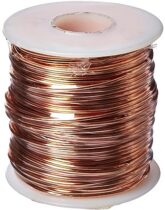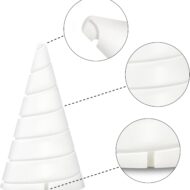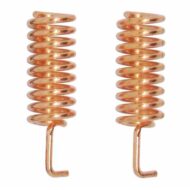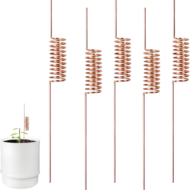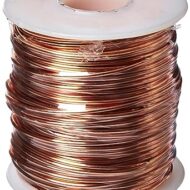Electric gardening tools have transformed the way homeowners and professionals approach yard maintenance, offering a sustainable, efficient, and user-friendly alternative to traditional gas-powered equipment. The evolution of garden care technology has brought forth innovative tools that are not only better for the environment but also for the operator, reducing noise, emissions, and effort. This shift has made maintaining a pristine outdoor space more accessible—even for those with minimal gardening experience.
Unlike their gas-powered counterparts, electric gardening tools operate on either battery or corded systems, providing consistent power without the burden of frequent refueling or complex maintenance. For many, the absence of harmful exhaust fumes and the quieter functionality of these tools makes them an appealing choice. Battery-operated models, in particular, are gaining traction due to advancements in lithium-ion technology, delivering long runtimes and faster charging for uninterrupted work sessions.
Electric tools are built with ergonomic designs to enhance usability, minimizing strain during prolonged use. Many models incorporate lightweight materials, adjustable handles, and intuitive features, making them suitable for individuals of all ages and abilities. Additionally, modern electric tools are often equipped with smart technologies such as automatic speed control, energy-efficient motors, and connectivity to mobile apps for monitoring performance.
The growing interest in eco-friendly solutions also aligns perfectly with the benefits electric tools offer. By drastically reducing carbon emissions and energy consumption, these tools cater to environmentally conscious users who seek sustainable alternatives for outdoor tasks. Transitioning to electric gardening tools not only supports a greener planet but also fosters a more enjoyable gardening experience overall.
Why Electric Gardening Tools Are the Future of Lawn Care
Electric gardening tools have revolutionized the way lawn care is approached, marking a significant shift from traditional gas-powered equipment. Their rise in popularity is driven largely by advancements in technology, consumer demand for convenience, and growing environmental consciousness. Unlike gas-powered counterparts, electric tools offer a cleaner, quieter, and more efficient way to maintain outdoor spaces, aligning perfectly with modern sustainability goals and lifestyle preferences.
Among their many advantages, electric gardening tools deliver significant environmental benefits. Since they do not rely on gasoline or oil, they produce zero direct carbon emissions during operation. This contributes to reducing air pollution and combatting climate change, crucial in today’s environmentally aware societies. Furthermore, the absence of gas fumes makes them safer and healthier for users, especially in terms of respiratory health.
Functionality and ease of use are additional winning features of electric tools. They often come with lightweight designs, making them more ergonomic and less physically demanding to operate for extended periods. Many models feature cordless designs powered by rechargeable lithium-ion batteries, allowing users to work freely without worrying about fuel storage or tangled cords. This versatility and portability provide a hassle-free experience that professional landscapers and home gardeners alike value.
Maintenance also sets electric tools apart from gas-powered options. With fewer moving parts, they require less upkeep—no oil changes, no spark plugs, and no air filters to replace. This not only reduces costs over time but also simplifies ownership, making these tools ideal even for gardening novices.
Additionally, electric gardening tools offer quieter operation, a major advantage in urban or suburban environments where noise ordinances and neighborly courtesy come into play. Unlike noisy gas-powered machines, they produce significantly less sound, providing a more peaceful yard care experience.
With increasing innovation in battery technology and motor efficiency, electric gardening tools continue to expand their capabilities, rivaling or even surpassing gas-powered machines in terms of runtime, power, and performance.
Essential Features of Electric Gardening Tools
When selecting electric gardening tools, understanding key features is critical to making the right choice for specific yard care needs. Attention to detail ensures efficiency, longevity, and ease of use, offering an effortless gardening experience.
1. Power Source and Compatibility
Electric gardening tools come in cordless (battery-powered) and corded models. Cordless tools offer mobility and convenience but require battery charging and often come with limited runtime. Corded versions provide a consistent power supply but limit movement due to cable constraints. Buyers should evaluate the size of their lawn and personal preferences before choosing between these options.
2. Battery Life and Charging Time
For cordless tools, battery performance is paramount. Look for tools with lithium-ion batteries, as they deliver longer runtime, consistent power, and quicker charging compared to older nickel-cadmium alternatives. Opting for tools with swappable batteries can also be a practical choice for prolonged tasks.
3. Weight and Ergonomics
Gardening tools should be lightweight and ergonomically designed to prevent strain during prolonged use. Handles with soft grips, adjustable heights, and balanced weight distribution can enhance comfort, especially for users with limited strength or mobility concerns.
4. Cutting and Trimming Capability
Features like blade sharpness, material, and motor power dictate efficiency. Whether it’s a hedge trimmer, mower, or pruning tool, a robust cutting mechanism ensures clean and accurate results while reducing the need for repetitive passes.
5. Noise Level
Electric tools are typically quieter than gas-powered models, making them more suitable for residential areas. However, some vary in sound levels, so tools with reduced decibel ratings are ideal for a peaceful gardening experience.
6. Ease of Maintenance
Durability is crucial, but tools requiring minimal maintenance stand out. Features like self-sharpening blades, rust-resistant components, and easy-to-clean mechanisms simplify upkeep and extend the tool’s lifespan.
7. Safety Features
Safety should not be overlooked. Essential safeguards include automatic shut-off features, blade guards, and non-slip grips. For corded tools, insulated cords and proper cord management are vital to prevent accidents.
8. Adjustability
Adjustable settings, such as cutting heights on mowers or telescoping handles on trimmers, cater to various lawn care preferences and improve ease of use for different users.
Taking these features into account ensures that electric gardening tools meet specific gardening demands while offering reliability and user-friendly functionality.
Eco-Friendly Benefits of Using Electric Equipment in Your Garden
Switching to electric gardening equipment offers numerous environmental benefits that contribute to a greener and more sustainable outdoor space. These tools are designed to minimize harmful emissions, reduce noise pollution, and conserve natural resources, making them a smart choice for eco-conscious gardeners.
1. Reduction in Greenhouse Gas Emissions
Unlike gas-powered equipment, electric gardening tools produce zero direct emissions during operation. This significantly reduces air pollution and helps to combat climate change by cutting down on the release of harmful greenhouse gases such as carbon dioxide and methane. Electric tools derive their power from renewable energy sources when charged on clean energy grids, further decreasing their carbon footprint.
2. Lower Air Pollution Levels
Gasoline-powered equipment often emits volatile organic compounds (VOCs) and other pollutants that degrade air quality. Electric alternatives eliminate these pollutants entirely, promoting healthier air in the garden for both humans and surrounding ecosystems. This is particularly important for urban gardens where air quality concerns are more pressing.

3. Noise Pollution Reduction
Electric equipment operates at significantly lower noise levels than traditional gas-powered models. This reduction in noise pollution is beneficial for wildlife habitats in and around the garden. It also ensures a more pleasant and stress-free working environment for the gardener and neighbors alike.
4. Decreased Fossil Fuel Dependence
By transitioning to electric gardening tools, homeowners can reduce their reliance on fossil fuels such as gasoline and oil. This shift not only conserves finite natural resources but also mitigates the environmental impact associated with fuel extraction, refining, and transportation.
5. Sustainable Material Usage
Many electric tools are manufactured using recycled materials and incorporate designs that emphasize repairability and long lifespans. This reduces waste and minimizes the environmental footprint over the tool’s entire lifecycle. Additionally, some brands offer recycling programs for old equipment, further supporting sustainable practices.
6. Supporting Renewable Energy Integration
Electric gardening tools align seamlessly with renewable energy adoption. By powering these tools with electricity derived from solar panels or other green energy sources, gardeners contribute to a more circular energy economy while lowering dependency on non-renewable power systems.
From cleaner air to quieter operations, the ecological advantages of electric gardening tools extend beyond the immediate garden and impact the broader environment positively. As more gardeners embrace eco-friendly alternatives, the industry’s shift toward sustainability shows promise for future generations.
Corded vs. Cordless Electric Tools: Which Is Right for Your Garden?
In evaluating whether corded or cordless electric tools are better suited to your gardening needs, consideration of factors such as power, convenience, and garden size is essential. Each option provides distinct advantages, and understanding their strengths can help users decide which is the optimal choice.
Corded Electric Tools
Corded electric tools offer consistent and uninterrupted power, making them ideal for tasks that demand extended runtime or high output. These tools are frequently lighter than their cordless counterparts because they do not rely on heavy batteries. They are typically favored for gardens near an accessible power source, as their performance does not degrade over time. However, their reliance on electrical outlets and extension cords can limit mobility and may pose a tripping hazard.
Advantages of Corded Tools:
- Unlimited runtime ensuring uninterrupted work.
- Lighter in weight due to the absence of batteries.
- Generally more affordable compared to cordless alternatives.
Considerations:
- Limited range restricted by cord length.
- Potential inconvenience of managing cords during use.
Cordless Electric Tools
Cordless tools prioritize mobility and ease of use, allowing users to maneuver freely without being tethered to an outlet. They are powered by rechargeable batteries and are especially suited for large gardens or areas without nearby power sources. While advancements in battery technology have improved their runtime significantly, they may require frequent recharging during prolonged tasks. These tools are often slightly heavier due to the inclusion of a battery pack.
Advantages of Cordless Tools:
- Enhanced portability and freedom of movement.
- Ideal for large or remote gardens with limited access to power outlets.
- Safer operation without cords in the work area.
Considerations:
- Limited runtime depending on battery capacity.
- Higher upfront costs due to battery technology.
Choosing the Right Option
For gardeners seeking reliability and consistent power for intensive tasks, corded tools remain a dependable choice. Conversely, those prioritizing mobility and untethered operation may find cordless tools more appealing. Each option caters to distinct gardening needs, making the choice highly dependent on individual preferences and yard requirements.
Tool #1: Electric Lawn Mower – Precision Cutting Without the Noise
An electric lawn mower offers a practical and eco-friendly solution for maintaining a well-groomed yard. Unlike their gas-powered counterparts, electric models operate with a powerful yet quiet motor, providing a peaceful trimming experience while significantly reducing carbon emissions. These innovative mowers enable homeowners to achieve pristine, even cuts without the disruptive noise pollution often associated with traditional lawn care equipment.
Electric lawn mowers are designed for efficiency and convenience. Many models feature lightweight frames and user-friendly handles that enhance maneuverability, making them ideal for navigating tight corners and uneven terrain. Cordless options provide added freedom of movement, powered by long-lasting rechargeable batteries that can handle medium to large lawns on a single charge. Adjustable cutting heights allow users to tailor their mowing experience based on grass type and season, promoting healthier lawn growth over time.
Maintenance requirements for electric mowers are minimal. Without the need for oil changes or fuel storage, they simplify upkeep and eliminate the hassles associated with gas engines. Routine cleaning of blades and decks ensures optimal performance, while modern designs incorporate rust-resistant materials for added durability. Safety features, such as blade stops and locking mechanisms, prioritize user protection during operation.
Key benefits include reduced noise levels, lower operating costs, and an environmentally sustainable approach to lawn care. For individuals seeking a balance between performance and environmental responsibility, electric lawn mowers are an excellent choice. Transitioning to this tool allows homeowners to maintain their outdoor spaces effortlessly while supporting greener gardening practices.
Tool #2: Cordless Hedge Trimmer – Sculpting Shrubs Made Simple
A cordless hedge trimmer revolutionizes shrub and hedge maintenance, offering a balance of convenience, precision, and efficiency. With no cords to tangle or limit reach, this tool empowers gardeners to trim and sculpt their greenery effortlessly, even in hard-to-access areas. Powered by rechargeable lithium-ion batteries, these trimmers eliminate the need for gas-fueled engines, reducing noise, emissions, and upkeep concerns.
Ergonomically designed handles and lightweight construction ensure comfortable handling during extended use, minimizing fatigue. The blades, crafted from hardened steel, deliver clean, sharp cuts that promote healthy growth and maintain a manicured appearance. High strokes per minute (SPM) enable quicker trimming, saving time while providing professional-grade results.
Safety features, such as dual-action blades, reduce vibration and enhance stability for even the most intricate pruning tasks. Some models come equipped with blade guards and two-hand safety switches to prevent accidental starts, prioritizing user protection. Advanced designs may include adjustable blade lengths or pivoting heads, catering to various hedge shapes and sizes.
Cordless hedge trimmers are suitable for diverse applications:
- Formal hedges: Achieve precise, straight-edged cuts for a polished look.
- Shaping ornamental shrubs: Easily sculpt shapes or topiary with accuracy.
- Overgrowth control: Manage wild or overgrown bushes without hassle.
Battery performance depends on the model, but many offer runtimes sufficient for standard yard tasks, with fast-charging options available for added convenience. For larger properties, spare battery packs can be a practical addition.
Whether maintaining simple borders or crafting elaborate designs, a cordless hedge trimmer streamlines the process, delivering reliable results. It is an essential tool for modern gardeners aiming to combine ease of use with professional-quality finishes.
Tool #3: Electric Leaf Blower – A Hassle-Free Way to Clear Debris
An electric leaf blower offers a modern, efficient solution to maintaining a well-kept yard. Designed to swiftly clear leaves, grass clippings, dirt, and other debris, it minimizes the effort required for one of the most tedious outdoor chores. With its streamlined design and advanced motor, it delivers power while keeping your yard work simple and stress-free.
Electric leaf blowers come in two primary variations: corded and battery-powered. Corded models provide consistent power and are usually lightweight, making them ideal for smaller yards or areas near electrical outlets. On the other hand, battery-powered models offer unmatched portability and freedom of movement, allowing for easy operation without the restriction of cords. Many models feature lithium-ion batteries, which deliver long-lasting performance and quick recharge times.
A defining advantage of electric leaf blowers is their environmental friendliness. Unlike gas-powered alternatives, they produce zero emissions and operate with less noise, making them suitable for residential areas with stricter noise regulations. They also require less maintenance since there are no spark plugs, fuel tanks, or oil to manage. This results in fewer headaches for the user and a longer lifespan for the device.
Some electric leaf blowers come equipped with adjustable speed settings, allowing users to tailor the airflow strength to specific cleanup tasks. Low speeds are perfect for light jobs, like clearing flower beds, while high speeds tackle stubborn debris on driveways and sidewalks. Look for features such as ergonomic handles, lightweight construction, and easy-start buttons to ensure comfortable and seamless usage.
Whether tackling a leaf-strewn lawn or prepping outdoor spaces for entertaining, an electric leaf blower simplifies cleanups and enhances productivity in yard maintenance tasks.
Tool #4: Electric Chainsaw – Powerful Cutting for Tree Maintenance
An electric chainsaw provides the ideal combination of power, precision, and eco-friendliness for tree maintenance tasks. Unlike gas-powered chainsaws, electric models operate with minimal noise and emissions, making them a sustainable choice for modern gardening enthusiasts. These tools are designed to handle a wide range of cutting tasks, from pruning overgrown branches to cutting down small trees with ease.
The electric chainsaw’s primary advantage lies in its simplicity and efficiency. Equipped with an electric motor, it eliminates the need for a fuel system, thereby reducing maintenance headaches like carburetor cleaning or fuel stabilization. This feature also ensures reliable starts—most models require just the press of a button to get up and running. Gardeners can immediately begin work without the delays associated with starting traditional gas chainsaws.
Key Features and Benefits
- Lightweight Design: Most electric chainsaws are crafted with a lightweight body, making them easier to maneuver during extended use. This ergonomic advantage reduces user fatigue while enhancing precision for detailed cutting tasks.
- Safety Features: Many models include built-in safeguards such as chain brakes, low-kickback chains, and hand guards to minimize injury risks during use. These features make them an appealing choice for those new to power tools.
- Corded and Cordless Options: Corded electric chainsaws deliver consistent power, while cordless models offer unmatched portability, powered by rechargeable lithium-ion batteries. Choosing between these options depends on the user’s preference and the scale of the project.
- Low Noise and Vibration: Electric chainsaws produce quieter operation compared to their gas counterparts, ensuring more enjoyable use without disturbing neighbors or wildlife. Additionally, they run with reduced vibrations, providing greater control and comfort.
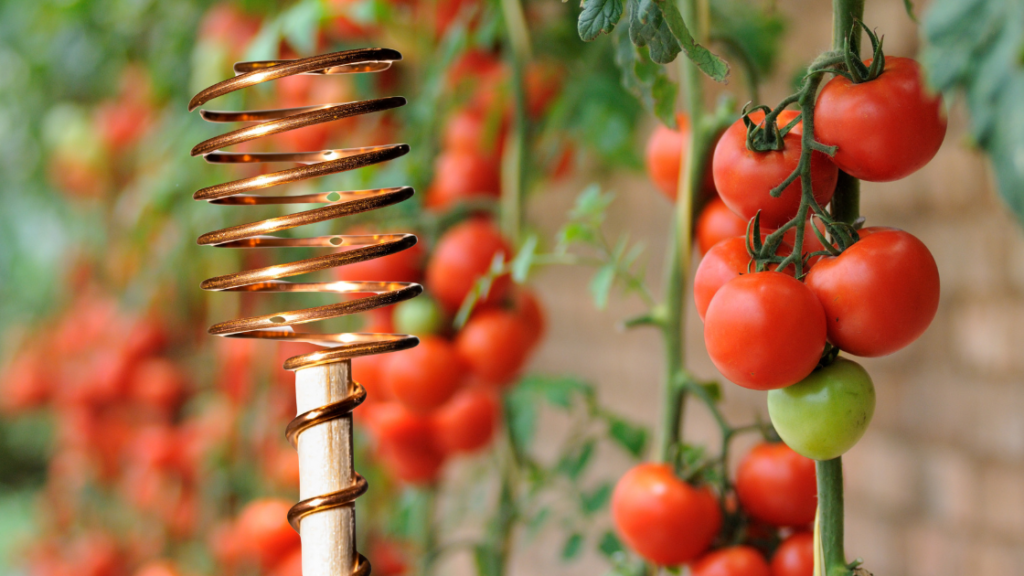
Application Tips
To achieve optimal results, users should ensure that the chainsaw is equipped with a sharp chain before beginning work. Regular lubrication of the chain bar is essential to maintain smooth cutting performance and prevent overheating. For safety, always use personal protective equipment, such as gloves, goggles, and a helmet, to mitigate risks while handling the tool.
Tool #5: Battery-Powered String Trimmer – Flawless Edging Every Time
A battery-powered string trimmer is a precision tool that transforms lawn edging and trimming into an effortless task. Designed for versatility and ease of use, this electric gardening essential delivers clean, sharp edges along driveways, pathways, garden beds, and other boundaries. Its cordless design eliminates the hassle of managing power cords, offering increased maneuverability and uninterrupted movement through various areas of the yard.
These trimmers are typically equipped with a lightweight yet durable body, ensuring reduced fatigue for the user while maintaining high performance. The battery technology powering modern string trimmers provides not only sufficient runtime for small to medium-sized yards but also quick recharging capabilities, allowing gardeners to complete their tasks efficiently. Many models come with adjustable handles and telescoping shafts, catering to different user heights and preferences for ergonomic comfort.
The tool’s performance lies in its advanced cutting systems. String trimmers use rotating nylon strings that slice through grass and weeds with precision. Some models offer multiple speed settings, enabling users to toggle between a low setting for lighter tasks and a high-speed mode for tougher vegetation. Additionally, features like automatic line feed simplify operation by ensuring consistent trimming efficiency without manual adjustments.
Another benefit of battery-powered string trimmers is their quiet operation. Unlike gas-powered alternatives, they produce significantly less noise, making them ideal for residential areas where minimizing disturbance is key. Furthermore, their electric design is eco-friendly, releasing no harmful emissions into the environment—a crucial advantage for sustainability-conscious gardeners.
When selecting a battery-powered string trimmer, users should consider factors like the battery’s capacity, weight of the unit, and compatibility with additional attachments. Many manufacturers now offer trimmers as part of multi-tool systems, allowing users to interchange accessories for varied gardening tasks. With their combination of convenience, portability, and precision, a battery-powered string trimmer perfectly complements any electric gardening tool collection.
Tool #6: Electric Tiller – Prepping Soil with Ease
When it comes to preparing soil for planting, an electric tiller proves to be an indispensable tool. Designed for efficiency and ease of use, electric tillers allow gardeners to break up hard, compact soil, making it more porous and ready for planting. Unlike their gas-powered counterparts, electric tillers boast a lighter build and require minimal maintenance, eliminating the hassle of dealing with fuel or complex engine components.
One of the most notable advantages of an electric tiller is its environmentally friendly design. It operates without releasing harmful emissions, making it a cleaner alternative for eco-conscious gardeners. Additionally, many models offer quiet operation, reducing noise pollution in residential neighborhoods. This makes the tool suitable for early morning or evening use without disturbing others.
The tool’s versatility is another key feature. It can effectively handle a range of soil types, from clay to sandy, and can be adjusted to accommodate different depths and widths depending on the specific needs of the garden. Adjustable tines allow for precision, making it possible to cultivate around delicate plants or in tight corners. For larger plots, the power of an electric tiller can save countless hours compared to manual labor with a shovel or hoe.
To further simplify usage, most electric tillers come equipped with ergonomic handles, ensuring a comfortable grip and reducing operator fatigue. Some advanced models also feature foldable handles for compact storage, making them a practical choice for gardeners working with limited space. Many brands include safety features like overload protection, ensuring that the motor remains secure even when tackling tough soil conditions.
For gardeners looking for a straightforward way to rejuvenate their soil without exerting excessive physical effort, the electric tiller offers a modern, reliable solution.
Tool #7: Cordless Pole Saw – Effortless Pruning for Hard-to-Reach Areas
A cordless pole saw offers the perfect solution for maintaining trees and shrubs without the hassle of ladders or manual pruning tools. Designed with a long, extendable pole and a compact saw at its head, it allows gardeners to cut branches in high or otherwise inaccessible areas with minimal effort and maximum efficiency.
One of the key advantages of a cordless pole saw lies in its freedom of movement. Without the restriction of a power cord, the user can easily navigate around the yard, tackling branches scattered across different locations. This feature is especially valuable in large gardens or wooded spaces where corded tools can limit maneuverability.
The built-in rechargeable battery ensures the tool operates with consistency, while modern lithium-ion batteries provide longer run times and quicker charging cycles. Depending on the brand and model, most cordless pole saws can handle branches ranging in diameter from 4 to 6 inches, making them ideal for trimming overgrown trees or removing dead limbs.
Most cordless pole saws feature adjustable shafts, typically extending to heights between 8 and 12 feet, allowing for greater flexibility to reach varying branch heights. The lightweight construction of these tools reduces user fatigue during prolonged use, and many models come with ergonomic handles for added comfort and control.
For safety, many cordless pole saws are equipped with features such as a chain brake and automatic oiling systems, helping to prevent overheating and ensuring the saw operates smoothly. A safety trigger lock and low noise output also make them a practical addition to residential yard work routines, especially in neighborhoods with noise restrictions.
Tool #8: Electric Pressure Washer – Revitalizing Outdoor Surfaces
Transforming outdoor spaces becomes remarkably straightforward with the inclusion of an electric pressure washer. This powerful gardening tool is a game-changer when it comes to maintaining and rejuvenating patios, walkways, fences, and even garden furniture. By delivering a high-pressure stream of water, it effectively removes dirt, mold, algae, and grime that otherwise accumulate over time.
An electric pressure washer operates with precision and efficiency. It avoids the hassle of gas-powered machines by using a reliable electric motor, offering a quieter, more eco-friendly solution. Its lightweight design ensures portability, allowing users to conveniently reach various areas of their yard or driveway. Additionally, many models are equipped with adjustable pressure settings to suit specific cleaning requirements, from delicate surfaces like wood to durable concrete.
Key features of this tool often include:
- High-pressure nozzles for tackling stubborn stains.
- Interchangeable spray tips for varying spray patterns and intensities.
- Built-in detergent tanks for enhancing cleaning efficiency.
- Ergonomic handles to prevent strain during extended use.
When selecting an electric pressure washer, factors such as water pressure (measured in PSI), flow rate (GPM), and the included attachments are critical for ensuring optimal performance. Homeowners should prioritize models that balance power with user-friendly controls to deliver professional-quality results without unnecessary complexity.
From cleaning moss-covered stone pathways to refreshing outdoor furniture, an electric pressure washer quickly restores the beauty of hardscapes and accessories. Its ability to remove years of buildup in minutes makes it a time-saving asset for gardeners and property owners alike. By investing in an electric pressure washer, one can elevate their yard upkeep routine with minimal effort and maximum impact.
Tool #9: Rechargeable Garden Sprayer – Efficient Plant Care Made Simple
The rechargeable garden sprayer is a game-changing tool for anyone seeking to streamline their gardening routine. Designed to simplify plant care tasks, this versatile device offers a modern solution for distributing water, fertilizers, herbicides, or pesticides evenly over garden beds with minimal effort. Its reliance on electric power ensures a more consistent and controlled spray compared to traditional, manually operated models.
Equipped with a battery-powered motor, the rechargeable garden sprayer eliminates the need for continuous manual pumping, making it an excellent choice for those with larger yards or physical limitations. Many models feature adjustable nozzles, allowing users to customize the spray pattern to suit their specific needs—whether a fine mist for delicate flowers or a focused stream for larger shrubs and trees. With variable pressure settings, users can effortlessly shift between light and intensive applications based on the type of treatment required.
The portability and lightweight design of these sprayers further enhance their appeal. A rechargeable battery pack ensures hours of uninterrupted operation, making it suitable for extended gardening sessions. Many sprayers are also ergonomically designed with padded straps or handles, providing maximum comfort during usage. Furthermore, easy-to-remove tanks enable users to refill or clean the device with ease, preventing chemical cross-contamination.
This tool also supports eco-conscious gardening practices by reducing overapplication and wastage of products. Some high-end models include features such as automatic shut-off and liquid measurement indicators for precise dosing. These functionalities streamline the entire gardening process, making it faster, safer, and more efficient.
For those exploring new ways to make yard work less tiring and more productive, the rechargeable garden sprayer serves as a reliable, time-saving solution tailored to meet modern gardening demands.
Tool #10: Robotic Lawn Mower – Automating Your Lawn Maintenance
A robotic lawn mower redefines the way lawn care is approached, offering precision, efficiency, and unmatched convenience. This advanced gardening tool is designed to cut grass autonomously, requiring minimal human intervention. Equipped with smart technology, the robotic mower is programmed to handle routine cutting tasks, helping homeowners maintain a pristine yard effortlessly.
Modern robotic lawn mowers feature integrated sensors that navigate the terrain intelligently while avoiding obstacles and climbing small inclines. This ensures a comprehensive cut, even in yards with varied topography. Many models come with boundary wires or GPS mapping to define the mowing zone, preventing the device from straying into unintended areas.
Key features found in most robotic lawn mowers include adjustable cutting heights, weather resistance, and whisper-quiet operation, allowing them to run even during early morning hours without disturbing the neighborhood. Some advanced models have rain-detection sensors to automatically suspend operation during wet conditions, preventing damage to both the device and the grass.
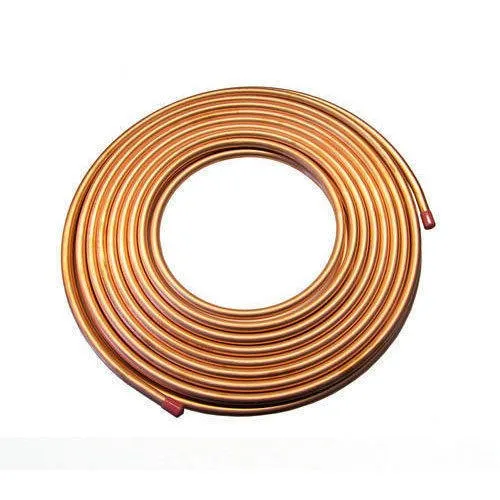
Connectivity enhances the user experience, with most robotic lawn mowers offering Bluetooth or Wi-Fi compatibility. This allows users to control schedules, monitor mowing progress, and adjust settings via smartphone apps. Thanks to these remote capabilities, yard care becomes customizable and flexible, catering to individual preferences and seasonal needs.
Energy efficiency is another standout characteristic, as most models are powered by rechargeable batteries. This not only reduces the mower’s carbon footprint but also eliminates the need for fuel storage and maintenance associated with gas-powered alternatives. Over time, this makes robotic mowers an eco-friendly and cost-effective solution.
Whether tending to a small garden or a sprawling yard, the robotic lawn mower provides a blend of innovation and simplicity, transforming lawn maintenance into a hands-free experience.
Safety Guidelines When Using Electric Gardening Tools
When operating electric gardening tools, following essential safety protocols ensures both personal well-being and the longevity of the equipment. Electric tools, though convenient and efficient, carry inherent risks that can be minimized with appropriate precautions.
- Inspect Tools Before Use: Always examine tools for frayed cords, loose connections, or physical damage. Faulty equipment can pose electrical hazards or cause malfunction during operation.
- Use Proper Protective Gear: Equip yourself with gloves, safety glasses, and sturdy, non-slip footwear to guard against injuries. Hearing protection may also be necessary when using louder tools like electric hedge trimmers.
- Avoid Wet Conditions: Refrain from using electric tools in damp or rainy environments to prevent electrical shocks. Handle the tools with dry hands and ensure the surrounding area is free of water.
- Be Mindful of Power Cords: Keep cords away from sharp objects, heavy machinery, and moving parts. Use outdoor-rated extension cords and position them to avoid tangling or accidental cutting.
- Unplug When Not in Use: Disconnect the tool from its power source during maintenance, blade changes, or when clearing debris from components. This precaution prevents accidental startups.
- Follow Manufacturer’s Instructions: Adhere to the operating manual provided with the tool. Familiarize yourself with safety guidelines specific to each device, including proper handling and recommended patterns of use.
- Maintain a Safe Work Area: Remove obstacles or debris from the workspace. This reduces tripping hazards and ensures an efficient and secure operation.
- Store Tools Properly: After use, clean and store electric gardening tools in a dry, secure location. Avoid coiling power cords tightly, as it can damage internal wiring over time.
Committing to these safety practices encourages effective yard work and minimizes potential harm, allowing for a smooth and worry-free gardening experience.
Cost-Saving Advantages of Switching to Electric Yard Tools
Switching to electric yard tools can provide significant cost-saving benefits, making them an attractive option for homeowners. Unlike gas-powered alternatives, electric tools generally require less maintenance, which translates into substantial savings over time. Gas-powered equipment often requires regular oil changes, spark plug replacements, and air filter upkeep. In contrast, electric tools are designed with fewer moving parts, reducing the frequency and cost of maintenance.
Electric yard tools are highly energy-efficient and eliminate the need for expensive gasoline. Running a gas-powered tool can add up quickly, especially during peak gardening seasons. By opting for electric tools, users can take advantage of lower electricity costs. Many modern electric tools are equipped with rechargeable batteries, further improving long-term affordability by reducing dependency on external power sources.
Additionally, electric tools offer increased durability due to their streamlined designs and precision engineering. As they rely less on components prone to wear and tear, they tend to have a longer lifespan compared to gas-powered counterparts, providing excellent value for the initial investment. Transitioning to electric yard tools also allows users to avoid unpredictable fuel price fluctuations, offering a more consistent and budget-friendly solution.
Government incentives and rebate programs further amplify cost savings. Many regions provide tax credits or rebates for adopting eco-friendly equipment, including electric tools, encouraging sustainability at a lower cost. These programs also complement the reduced operational expenses, maximizing overall financial benefits.
Ultimately, the reduced maintenance costs, energy efficiency, and various incentives highlight the economic practicality of choosing electric yard tools, paving the way for a greener and more cost-conscious approach to yard work.
How to Maintain and Extend the Life of Your Electric Equipment
Proper maintenance of electric gardening tools not only ensures optimal performance but also extends their longevity. Following key care practices can help users avoid unnecessary replacements and repair costs, saving both time and money. Regular upkeep is vital to preserving the efficiency of electric equipment, even when used in demanding gardening tasks.
1. Clean Equipment After Every Use
Dirt, debris, and moisture can accumulate on electric gardening tools, potentially damaging their components over time. After every use:
- Wipe down tools with a dry or slightly damp cloth to remove dirt.
- Use compressed air or a soft brush to clear debris from vents and crevices.
- Ensure that tools are stored only when completely dry to prevent corrosion.
2. Inspect Cords, Batteries, and Connections
Frayed power cords or loose connections can compromise safety and performance. Routine checks of these components help identify problems early:
- Examine power cords for any signs of wear, fraying, or cracking.
- Verify that battery terminals are clean and corrosion-free.
- Confirm that plugs connect securely to outlets or chargers.
3. Follow Manufacturer’s Guidelines
Every tool comes with a specific set of maintenance instructions provided by the manufacturer. Adhering to these guidelines ensures proper care:
- Use only recommended cleaning agents and spare parts.
- Avoid overloading tools or using them for tasks beyond their intended purpose.
- Charge batteries as instructed to avoid overcharging or undercharging.
4. Maintain Blades and Moving Parts
Rotating blades, motors, and other moving parts should be checked and maintained regularly for peak functionality:
- Sharpen blades as needed to prevent dull edges, which can strain the motor.
- Lubricate moving parts to reduce friction and wear.
- Check for loose screws or bolts and tighten them if necessary.
5. Store Tools in Appropriate Conditions
Temperature, humidity, and storage position affect equipment lifespan. Proper storage practices include:
- Keeping tools in a dry, sheltered area to avoid exposure to rain or extreme temperatures.
- Hanging tools or placing them on sturdy shelves to prevent accidental damage.
- Avoiding direct sunlight, which can degrade plastic and rubber components.
6. Schedule Routine Professional Servicing
For complex issues or general upkeep, professional servicing ensures tools remain in excellent working condition:
- Schedule annual inspections with certified technicians.
- Replace worn-out parts, such as brushes or seals, promptly.
- Test electrical components to verify their safety and performance.
By implementing these maintenance steps, users can ensure their electric gardening tools remain reliable and long-lasting, making yard work more efficient and enjoyable.
Top Brands and Models to Consider for Your Gardening Needs
When selecting electric gardening tools, choosing reputable brands and models ensures durability, efficiency, and reliability. Each brand typically specializes in certain tools, offering features tailored to a variety of gardening tasks. Understanding the top players in this market can help gardeners make informed decisions.
1. Greenworks
Greenworks is renowned for its eco-friendly, battery-powered gardening tools. Its line of cordless lawnmowers, such as the Greenworks Pro 80V 21-inch Lawn Mower, features robust power akin to gas models. Additionally, their lightweight 40V Cordless String Trimmer delivers precision trimming and ease of use, ideal for small to medium-sized yards.
2. Dewalt
Dewalt’s tools are known for their rugged build and high performance. The Dewalt FlexVolt 60V MAX Chainsaw is an excellent choice for heavy-duty wood cutting and remains one of their flagship products. Their 20V MAX Hedge Trimmer provides precision while maintaining portability, making it suitable for shaping shrubs and hedges.
3. WORX
For those needing ergonomic designs and compact tools, WORX stands out. The WORX WG163 Weed and Grass Trimmer is particularly popular, boasting a 2-in-1 design that transitions between trimming and edging. WORX also excels with products like the WG779 Cordless Lawn Mower, designed for smaller gardens requiring maneuverability.
4. Bosch
Bosch combines innovation with reliability. Its Bosch AHS 50-20 Cordless Hedge Trimmer offers laser-cut blades for detailed cutting. Meanwhile, the Bosch UniversalChain 18 Chainsaw is compact yet powerful, suitable for light pruning or preparing firewood.
5. Ego Power+
Ego Power+ designs state-of-the-art tools with top-rated battery technology. The Ego Power+ 56V Cordless Electric Blower delivers high air speeds, perfect for clearing leaves. The Ego Power+ LM2135SP Lawnmower impresses with multiple cutting modes and a sleek, user-friendly design.
6. Ryobi
Ryobi caters to versatile needs with tools like the Ryobi 40V Expand-It Attachments Trimmer, which can transform into a multi-functional yard tool. Their 18V ONE+ Chainsaw is lightweight yet effective, tailored for smaller garden maintenance tasks.
“The right brand and model choice not only ensures functional benefits but also reduces maintenance demands over time.”
By assessing what each brand offers, gardeners can prioritize tools that suit specific requirements, whether it’s versatility, compact designs, or professional-grade performance. These models have maintained strong reputations across gardening communities for their effectiveness and innovation.
A Sustainable Choice: Electric Tools as a Long-Term Investment
Electric gardening tools are quickly becoming a preferred option for homeowners looking to balance efficiency with environmental responsibility. Unlike their gas-powered counterparts, these tools create significantly lower carbon emissions, making them an eco-friendly choice amidst growing concerns about climate change. Beyond their environmental benefits, electric tools offer long-term cost savings, contributing to their reputation as a practical investment for any gardening enthusiast.
The operational costs associated with electric tools are notably lower than gas-powered models. They require less maintenance—no oil changes, spark plug replacements, or fuel stabilizers are needed. The absence of fuel dependency also shields users from fluctuating gas prices. Over time, electric gardening tools help users save on maintenance and operational expenses, proving their financial benefits beyond the initial purchase.
Durability is another key factor that enhances the value of electric tools. Thanks to advancements in lithium-ion battery technology, many modern models provide exceptional longevity. Rechargeable batteries today are designed to withstand repeated charge cycles, offering years of reliable service. This durability ensures that electric tools do not need frequent replacements, reducing waste and cost over extended periods.
Noise reduction is another advantage, adding value to their sustainable appeal. Electric gardening tools operate much more quietly than gas-powered models, leading to less noise pollution. This makes them ideal for suburban or urban areas, where maintaining a quieter environment is essential.
Electric tools also align with recent market trends favoring clean energy solutions. Many manufacturers now emphasize eco-conscious designs and offer tools compatible with renewable energy sources. Users choosing electric options contribute to a broader movement toward sustainable living, reinforcing values that prioritize ecological preservation.
Conclusion: Transform Your Gardening Experience with Electric Tools
Electric gardening tools revolutionize yard maintenance by providing enhanced efficiency, reduced physical strain, and environmentally friendly performance. These tools cater to gardeners of all skill levels, making routine tasks more manageable and enjoyable. By embracing cutting-edge designs and technology, electric tools help modernize gardening practices, allowing homeowners to focus on creativity and plant care rather than exhausting labor.
The advanced engineering of these tools ensures portability, lower noise levels, and less environmental impact compared to their gas-powered counterparts. Products like electric lawn mowers, trimmers, and leaf blowers empower users with simple operation and minimal maintenance requirements. Battery-operated models, in particular, have become synonymous with convenience, thanks to their cordless designs and extended run times. Such tools make it possible to navigate large, intricate yards without interruption.
Moreover, features such as adjustable speed settings, lightweight frames, and ergonomic designs extend the benefits to older adults or those with limited physical strength. These improvements underscore the inclusivity electric gardening tools bring to the table. For example, an electric hedge trimmer equipped with telescopic handles can eliminate the need for bulky ladders, ensuring safety and ease of use.
The accessibility of these tools also contributes to more sustainable gardening practices. Many electric models now support alternative energy sources like solar chargers, highlighting a commitment to eco-conscious living. This makes them ideal investments for individuals striving to align their hobbies with environmental stewardship.
With consistent innovation in the electric gardening tool market, maintaining a vibrant, picturesque yard no longer feels overwhelming. Homeowners can transform their outdoor spaces effortlessly while contributing to a greener future.



